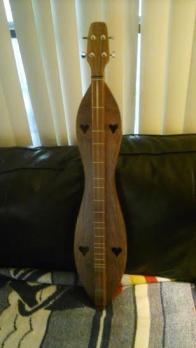Bagpipe tuning and it's versatility
A while ago, I posted a clip of Boil Them Cabbage Down, where I started it off in the key of D, then switched to key of G, then ended it back in D, which got a couple of responses which I thought I'd talk about.
I use Bagpipe tuning a lot and find it a versatile tuning for playing noter/drone style. From the zero fret (assuming you are tuned Ddd) with the 6.5 fret, you get a complete key of D, as well as D mixolydian. From the third fret, you get the key of G. How I decide which key to use depends on a few things. If I am using a DAA tab, and it dips below the third fret, then it is played using that tab but sounding in the key of G instead. If I am using a DAd tab, if it doesn't have to jump to the middle string for the melody, then I use that tab and it will be in the key of D. However, if it does need to go to the middle string, then I have to use a DAA equivalent tab for that song, and play it in the key of G. As well, if you use a reverse capo under the drones on the first fret, you get E minor, so you can play DAc tab (only sounding in E minor.) So out of this tuning, you get 2 full major keys, a mixolydian mode, and a minor key, all without having to retune, which is something I *do not* due. (When I have something made for me, I have it set-up, fretted, and strung for what I want, and leave it parked there.)
I hope this explains the mystery of Bagpipe tuning a bit. It may not be everyone's cup of tea, but it works for me 

